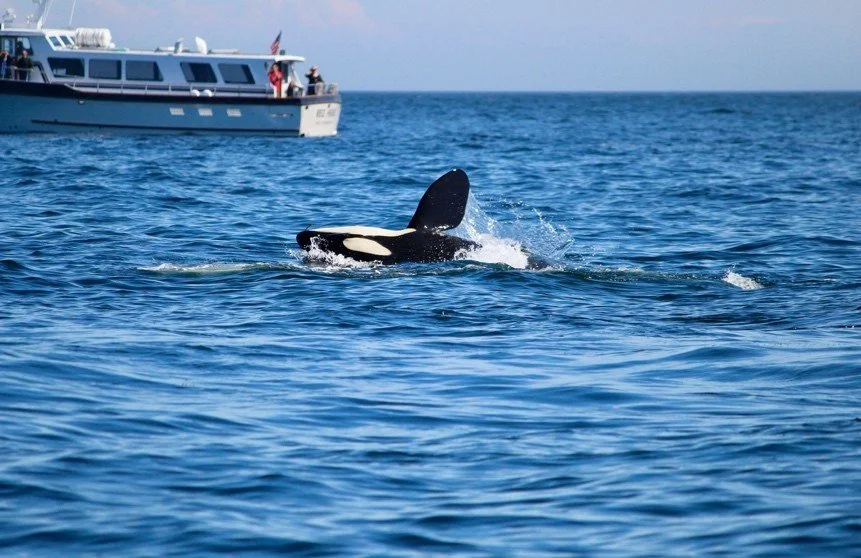The return to Penn Cove
By Anya Parekh
The Salish Sea was once home to over 180 resident orca whales; 74 remain.
The waters off Washington coast have been inhabited by a unique sub-species of orcas called the Southern Residents for over 10,000 years. Now, they balance on the brink of extinction.
Courtesy of Anya Parekh
The Residents are made up of three different pods, J, K, and L pods. In 2005, they were officially recognized as a federal endangered species.
The Southern Resident orcas are extremely social and intelligent creatures. Similar to us, they build friendships and relationships within their pods and often exhibit behavioral patterns that favor their friends. They communicate through a series of clicks and whistles and they’ve established sophisticated hunting strategies that involve working as a team to catch their prey, which consists almost entirely of chinook and other salmon.
Let’s go far back into the history of these whales.
Long ago, ancient sailors discovered the orcas, observing their hunting of larger whales and intelligent killing strategies. Because of this, the sailors named them “killer whales” or often called them “blackfish.” The whales, thought to be evil, murderous machines, were ordered to be shot on sight.
Courtesy of Anya Parekh
At one point, a plan hatched that involved the placement of a Browning Machine Gun on Quadra island. The plan was to use the gun to kill as many of the whales as possible. Luckily, due to the fear of the bullets ricocheting off the water and causing harm to people nearby, the gun was never fired.
The 1970’s marked the most important and painful period of the Southern Resident’s history: the Penn Cove captures.
In the late 1960’s, the marine park industry experienced significant growth, and they all wanted orca whales. The captures in 1970 were horrifying, ripping 47 whales from their home, and killing 12 more in the process.
They used speedboats and fishing vessels to create noise and waves to confuse and scare the whales and corral them towards shallower water. They dragged long nets between them to form barriers. To further frighten the orcas and drive them into their desired areas, they set off underwater explosives (seal bombs) and banged metal pipes under the water.
The methods used during the attack were cruel, intense, and dangerous. In the proccess, whales died from stress, entanglement, and drowning in the nets. In some cases, crews used heavy weights to sink the dead whales, hiding the losses- a fact that was only brought to light years later.
Courtesy of Anya Parekh
One of the most famous stories from these captures is about Lolita, or “Tokitae,” a female whale from L pod, who was captured from Penn Cove.
Lolita was taken from her family during the captures in 1970. She was sold to the Miami Seaquarium for $20,000, and was shipped from the Washington coast to fulfill the rest of her life in the world’s smallest orca tank. The tank was no more than twice Lolita’s body length wide at any point.
She was stolen from a free life in endless ocean with her family, and placed alone in a tank that was nicknamed the “whale bowl,” being forced to perform for tourists. She remained in tragic solitude, with no more than a rubber ball to keep her company, for 52 years. Lolita was trapped in captivity until her death in 2023.
Throughout her confinement, countless organizations and movements fought to release her; but it seemed when they came close, her return was always overruled.
Beginning with these captures, the Southern Resident population suffered a severe loss, which has yet to recover. The population dropped to around 71 whales by 1976.
Public outrage eventually led to the Marine Mammal Protection Act of 1972, but the damage caused on August 8th, 1970, can never be undone. For over 50 years since the captures, the whales have not returned to Penn Cove or the surrounding areas due to the generational trauma associated with the site. However, just last November, 2024, L pod finally returned to Penn Cove, and just a few weeks ago, September, 2025, J pod made their return. This marked an important milestone in the Resident’s history, signifying hope and optimism and raising this question: Is there hope for the recovery of the Southern Resident orcas?



